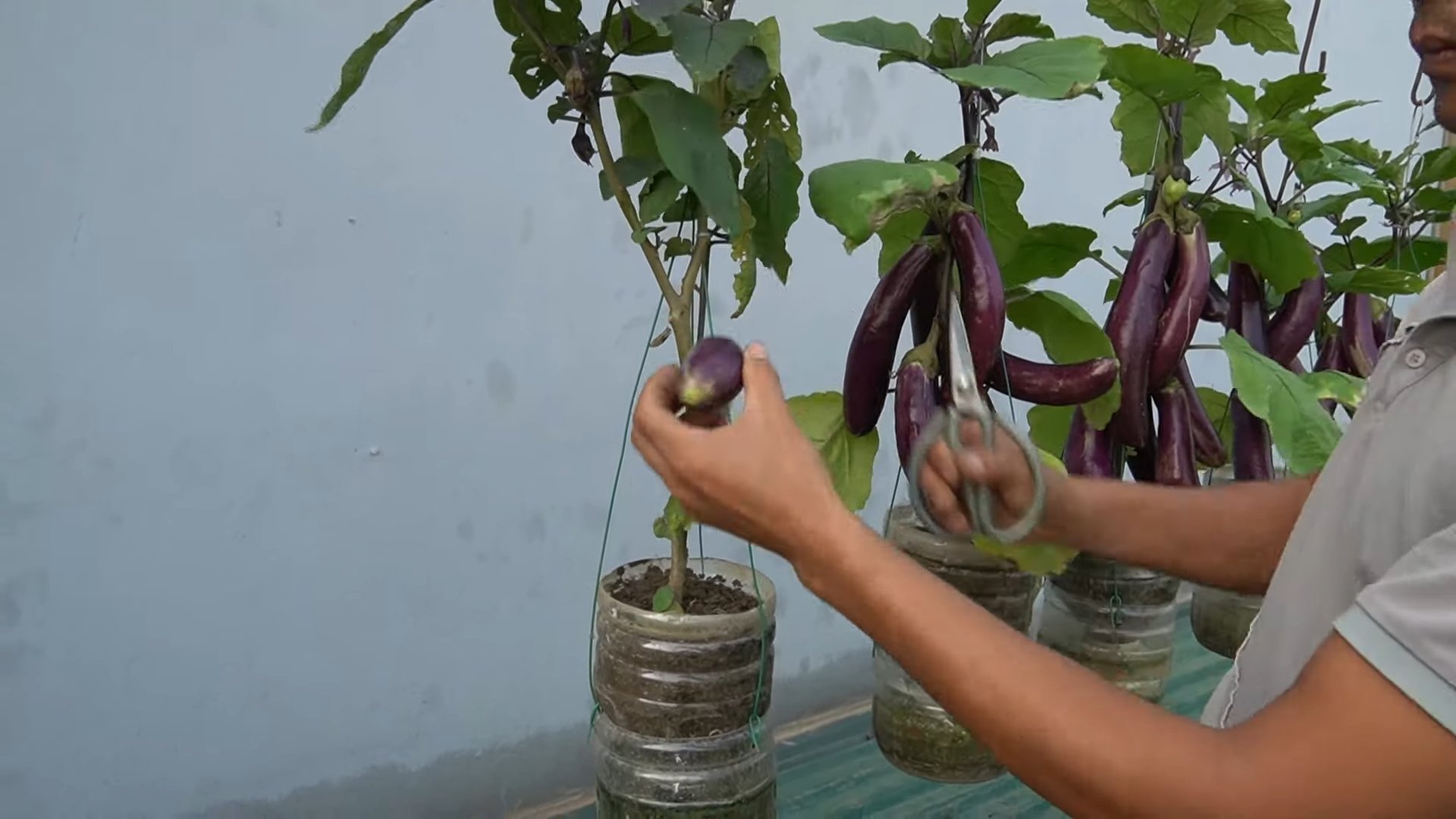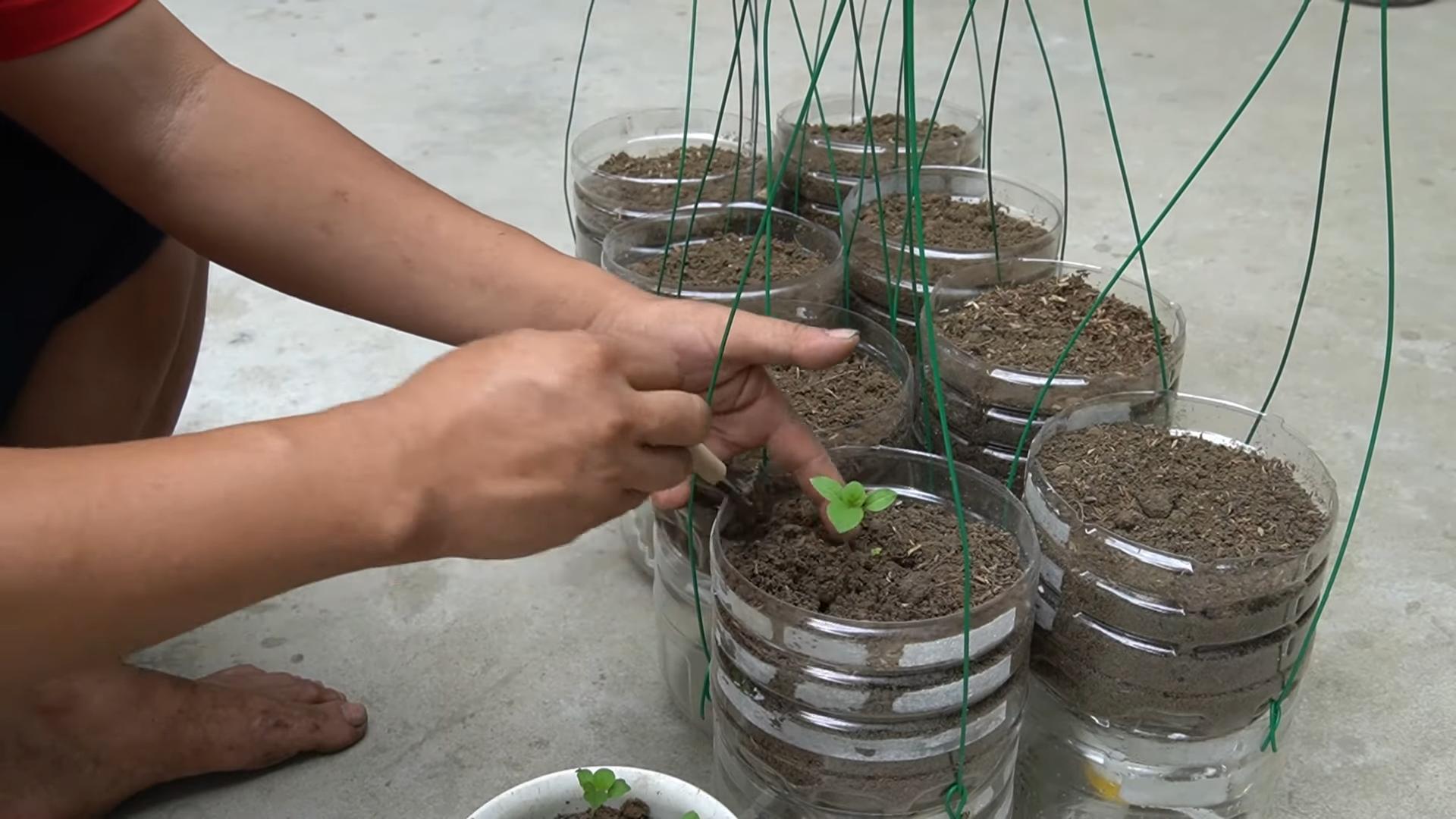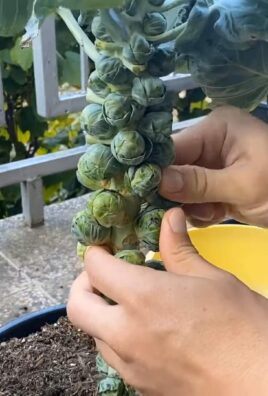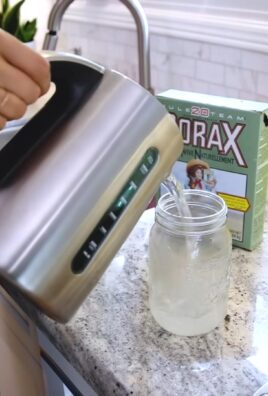Bottle Gardening Eggplants: Ever dreamed of harvesting plump, juicy eggplants right from your windowsill or balcony, even without a sprawling garden? I know I have! The idea of growing my own food, especially something as vibrant and delicious as an eggplant, always felt a bit out of reach living in an apartment. But guess what? It doesn’t have to be! This DIY guide unlocks the secrets to successfully cultivating eggplants using a surprisingly simple and sustainable method: bottle gardening.
While container gardening itself has ancient roots, with evidence dating back to the Hanging Gardens of Babylon, the modern twist of repurposing plastic bottles adds an eco-conscious dimension. Think about it – we’re taking something destined for the landfill and transforming it into a thriving mini-garden. How cool is that?
But why should you try bottle gardening eggplants? Well, for starters, it’s incredibly space-saving, perfect for urban dwellers or anyone with limited outdoor space. It’s also a fantastic way to control the growing environment, protecting your precious eggplants from pests and diseases. Plus, let’s be honest, there’s a certain satisfaction in nurturing a plant from seed to harvest, knowing you played a direct role in bringing fresh, organic produce to your table. So, grab your empty bottles, some potting mix, and let’s embark on this exciting journey of growing eggplants in bottles!

Bottle Gardening: Grow Eggplants in Recycled Plastic Bottles!
Hey there, fellow gardening enthusiasts! Are you short on space but dreaming of fresh, homegrown eggplants? Well, I’ve got a fantastic solution for you: bottle gardening! It’s a fun, eco-friendly way to grow your own veggies, and eggplants actually thrive in this setup. Plus, it’s a great way to recycle those plastic bottles that seem to multiply in our homes. Let’s dive in!
What You’ll Need
Before we get started, let’s gather our supplies. This is a pretty low-cost project, which is always a win!
* Plastic Bottles: You’ll need large plastic bottles, like the ones that hold soda or water (2-liter or larger are ideal). The number of bottles depends on how many eggplant plants you want to grow. I usually aim for one plant per bottle.
* Eggplant Seeds or Seedlings: You can start from seeds or buy small seedlings from your local nursery. Seedlings will give you a head start.
* Potting Mix: Use a good quality potting mix that drains well. Avoid garden soil, as it can compact in containers.
* Scissors or Utility Knife: For cutting the plastic bottles. Be careful!
* Drill or Nail and Hammer: To create drainage holes.
* Watering Can or Hose: For watering your plants.
* Optional:
* Gravel or Pebbles: For drainage at the bottom of the bottle.
* Plant Labels: To keep track of your eggplant varieties.
* Gloves: To protect your hands.
* Fertilizer: A balanced liquid fertilizer to feed your plants.
* Twine or Stakes: For supporting the eggplant plants as they grow.
Preparing the Bottles
This is where we transform those discarded bottles into mini-gardens!
1. Clean the Bottles: Thoroughly wash the plastic bottles with soap and water to remove any residue. Rinse them well and let them dry completely. This helps prevent any unwanted mold or bacteria growth.
2. Cut the Bottles: There are a couple of ways to cut the bottles, depending on the size and shape you want.
* Option 1 (Simple Cut): Cut the bottle in half horizontally. You’ll use the bottom half as the container and discard the top half (or save it for another project!). This is the easiest method.
* Option 2 (Self-Watering): Cut the bottle about two-thirds of the way up. Invert the top portion and nest it inside the bottom portion. This creates a self-watering system where the roots can draw water from the bottom reservoir. You’ll need to drill a hole in the bottle cap to allow the roots to reach the water.
3. Create Drainage Holes: This is crucial for preventing waterlogging, which can kill your eggplant plants.
* If you chose Option 1 (simple cut), drill or poke several drainage holes in the bottom of the bottle. I usually make about 4-5 holes.
* If you chose Option 2 (self-watering), you only need to drill a hole in the bottle cap.
4. Optional: Add Drainage Layer: Place a layer of gravel or pebbles at the bottom of the bottle. This will further improve drainage and prevent the potting mix from clogging the drainage holes.
Planting Your Eggplants
Now for the fun part – getting those eggplants into their new homes!
1. Fill with Potting Mix: Fill the prepared bottle with potting mix, leaving about an inch of space at the top. If you’re using the self-watering method (Option 2), fill the bottom reservoir with water before nesting the top portion.
2. Plant the Seeds or Seedlings:
* From Seeds: Make a small indentation in the potting mix, about 1/4 inch deep. Place 2-3 eggplant seeds in the indentation and cover them gently with potting mix. Water lightly.
* From Seedlings: Gently remove the seedling from its container. Loosen the roots slightly. Dig a hole in the potting mix large enough to accommodate the root ball. Place the seedling in the hole and cover the roots with potting mix. Water thoroughly.
3. Water Well: After planting, water the potting mix thoroughly until water drains out of the drainage holes. This helps settle the soil and ensures the roots have access to moisture.
4. Label Your Plants: If you’re growing multiple varieties of eggplants, label each bottle with the name of the variety. This will help you keep track of which plants are which.
Caring for Your Bottle-Grown Eggplants
Now that your eggplants are planted, it’s time to provide them with the care they need to thrive.
1. Sunlight: Eggplants need at least 6-8 hours of sunlight per day. Place your bottle gardens in a sunny location, such as a patio, balcony, or windowsill. If you don’t have enough natural sunlight, you can supplement with grow lights.
2. Watering: Water your eggplants regularly, especially during hot weather. Check the soil moisture by sticking your finger into the potting mix. If the top inch feels dry, it’s time to water. Avoid overwatering, as this can lead to root rot. If you’re using the self-watering method, check the water level in the bottom reservoir regularly and refill as needed.
3. Fertilizing: Eggplants are heavy feeders, so they need regular fertilization. Start fertilizing about 2-3 weeks after planting, using a balanced liquid fertilizer diluted to half strength. Fertilize every 2-3 weeks throughout the growing season.
4. Support: As your eggplant plants grow, they may need support to prevent them from falling over. Use twine or stakes to support the stems. Tie the stems loosely to the stakes to allow for growth.
5. Pest and Disease Control: Keep an eye out for pests and diseases. Common eggplant pests include aphids, flea beetles, and spider mites. Common diseases include powdery mildew and blossom-end rot. Treat any problems promptly with organic pest control methods or fungicides.
6. Pruning: Prune your eggplant plants to encourage branching and fruit production. Remove any suckers (small shoots that grow from the base of the plant) and any yellowing or dead leaves.
Harvesting Your Eggplants
The moment we’ve all been waiting for – harvesting those delicious eggplants!
1. Harvest Time: Eggplants are typically ready to harvest about 60-80 days after planting. The exact timing will depend on the variety and growing conditions.
2. Signs of Ripeness: Look for eggplants that are firm, glossy, and have a deep color. The skin should be smooth and unblemished. Gently press the skin with your finger. If it leaves a slight indentation, the eggplant is ripe.
3. Harvesting Technique: Use a sharp knife or pruning shears to cut the eggplant from the plant. Leave about an inch of stem attached to the eggplant.
4. Enjoy Your Harvest: Now you can enjoy your homegrown eggplants in your favorite recipes! They’re delicious grilled, roasted, fried, or used in stews and curries.
Troubleshooting
Even with the best care, you might encounter some challenges. Here are a few common problems and how to address them:
* Yellowing Leaves: This could be a sign of overwatering, underwatering, nutrient deficiency, or pest infestation. Check the soil moisture, fertilize if necessary, and inspect for pests.
* Blossom-End Rot: This is caused by a calcium deficiency. Ensure your potting mix is rich in calcium or add a calcium supplement. Water regularly and consistently.
* Lack of Fruit: This could be due to insufficient sunlight, poor pollination, or nutrient deficiency. Make sure your plants are getting enough sunlight, hand-pollinate the flowers if necessary, and fertilize regularly.
* Pest Infestation: Treat any pest infestations promptly with organic pest control methods, such as insecticidal soap or neem oil.
Tips for Success
Here are a few extra tips to help you succeed with bottle gardening eggplants:
* Choose the Right Variety: Some eggplant varieties are better suited for container gardening than others. Look for compact or dwarf varieties.
* Use High-Quality Potting Mix: Don’t skimp on the potting mix. Use a good quality mix that drains well and provides essential nutrients.
* Provide Adequate Support: Eggplant plants can get quite heavy, so provide adequate support to prevent them from falling over.
* Water Regularly: Eggplants need consistent moisture, especially during hot weather.
* Fertilize Regularly: Eggplants are heavy feeders, so fertilize them regularly to ensure they get the nutrients they need.
* Monitor for Pests and Diseases: Keep an eye out for pests and diseases and treat any problems promptly.

Conclusion
So, there you have it! Transforming ordinary plastic bottles into thriving eggplant havens isn’t just a quirky gardening experiment; it’s a sustainable, space-saving, and surprisingly effective way to cultivate your own delicious eggplants. We’ve walked you through the simple steps, highlighting the benefits of this innovative approach, and hopefully, dispelled any doubts you might have had.
Why is this DIY bottle gardening method a must-try? Because it empowers you to grow fresh produce even with limited space, reduces plastic waste by repurposing discarded bottles, and offers a unique, hands-on gardening experience. Imagine the satisfaction of harvesting plump, juicy eggplants from a garden you created using recycled materials! It’s a win-win for your taste buds and the environment.
But the beauty of this method lies in its adaptability. Feel free to experiment with different bottle sizes to accommodate various eggplant varieties. For smaller, bushier eggplants, smaller bottles might suffice, while larger, more prolific varieties will thrive in larger containers. Consider painting the bottles a lighter color, especially in hotter climates, to reflect sunlight and prevent the soil from overheating. You can also add a layer of mulch to the top of the soil to retain moisture and suppress weeds.
Don’t be afraid to get creative with your bottle garden design! Arrange the bottles in vertical stacks, create a hanging garden, or simply line them up on a sunny windowsill. The possibilities are endless. You can even incorporate other herbs and vegetables into your bottle garden alongside your eggplants, creating a miniature ecosystem.
We strongly encourage you to give this DIY bottle gardening technique a try. It’s an affordable, accessible, and rewarding way to connect with nature and enjoy the fruits (or rather, vegetables) of your labor. Once you’ve experienced the joy of harvesting your own homegrown eggplants, you’ll never look at plastic bottles the same way again.
And most importantly, we want to hear about your experiences! Share your photos, tips, and challenges in the comments section below. Let’s build a community of bottle gardening enthusiasts and inspire others to embrace this sustainable and rewarding practice. Did you find a particular type of eggplant thrived better in bottles? Did you discover a unique way to support the plants as they grew? Your insights could be invaluable to other gardeners. Let’s cultivate a greener future, one bottle eggplant at a time!
Frequently Asked Questions (FAQ)
What type of plastic bottles are best for bottle gardening eggplants?
Ideally, you should use food-grade plastic bottles, such as those used for water, juice, or soda. Avoid bottles that have contained harsh chemicals or cleaning products, as these may leach harmful substances into the soil. PET (polyethylene terephthalate) bottles, commonly used for water and soda, are a good choice. Ensure the bottles are thoroughly cleaned before use to remove any residue.
How big should the bottle be for growing eggplants?
The size of the bottle depends on the variety of eggplant you plan to grow. For smaller, more compact varieties, a 2-liter bottle might suffice. However, for larger, more prolific varieties, you’ll need a larger container, such as a 3-liter or even a gallon-sized bottle. The key is to provide enough space for the roots to develop and support the plant’s growth. Remember, eggplants need room to grow!
What kind of soil should I use for bottle gardening eggplants?
A well-draining potting mix is essential for successful bottle gardening. Avoid using garden soil, as it can become compacted in containers and restrict root growth. A good potting mix will provide adequate drainage, aeration, and nutrients for your eggplants. You can also amend the potting mix with compost or other organic matter to improve its fertility.
How often should I water my bottle garden eggplants?
The frequency of watering depends on several factors, including the weather, the size of the bottle, and the type of potting mix you’re using. Generally, you should water your eggplants when the top inch of soil feels dry to the touch. Avoid overwatering, as this can lead to root rot. Ensure the bottles have adequate drainage holes to prevent water from accumulating at the bottom.
How much sunlight do bottle garden eggplants need?
Eggplants require at least 6-8 hours of direct sunlight per day to thrive. Choose a sunny location for your bottle garden, such as a south-facing window or a sunny balcony. If you don’t have enough natural sunlight, you can supplement with grow lights.
Do I need to fertilize my bottle garden eggplants?
Yes, eggplants are heavy feeders and will benefit from regular fertilization. Use a balanced fertilizer specifically formulated for vegetables. Follow the instructions on the fertilizer packaging for application rates and frequency. You can also use organic fertilizers, such as compost tea or fish emulsion.
How do I support the eggplant plants as they grow in bottles?
As your eggplant plants grow, they may become top-heavy and require support. You can use stakes, trellises, or cages to provide support. Insert the stakes or trellises into the soil near the base of the plant and tie the stems to the support as needed.
How do I protect my bottle garden eggplants from pests and diseases?
Regularly inspect your plants for signs of pests or diseases. Common eggplant pests include aphids, flea beetles, and spider mites. You can control these pests with insecticidal soap, neem oil, or by handpicking them off the plants. Common eggplant diseases include fungal infections, such as powdery mildew and blight. Prevent these diseases by providing good air circulation, avoiding overhead watering, and using disease-resistant varieties.
Can I grow eggplants in bottles indoors?
Yes, you can grow eggplants in bottles indoors, but you’ll need to provide adequate light and ventilation. Place the bottles near a sunny window or use grow lights to supplement natural sunlight. Ensure good air circulation to prevent fungal diseases.
What are some variations I can try with bottle gardening eggplants?
You can experiment with different bottle sizes, colors, and arrangements. Try creating a vertical bottle garden by stacking the bottles on top of each other. You can also paint the bottles to add a decorative touch. Consider growing different varieties of eggplants in your bottle garden, such as Japanese eggplants, Italian eggplants, or Thai eggplants. You can also companion plant other herbs and vegetables alongside your eggplants, such as basil, tomatoes, or peppers.




Leave a Comment